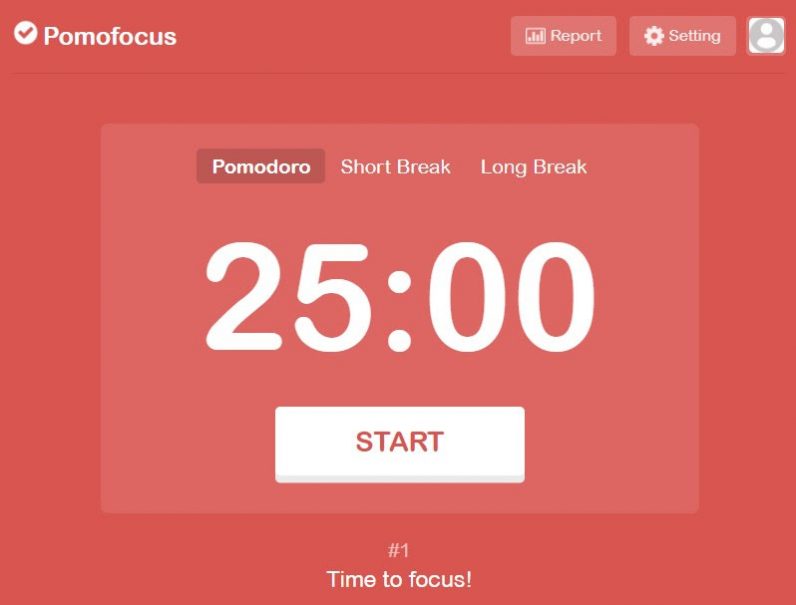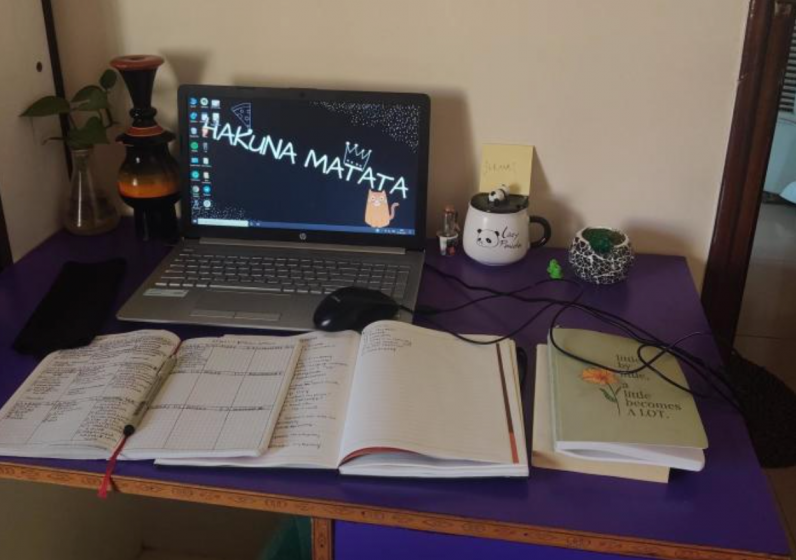Scandinavian countries dominate the World Happiness Report — Norway being the third most productive country in the world and Helsinki winning the title of the best city for work-life balance. And their standard working week is less than 40 hours long. They work a whopping 359 hours less than Americans every year.
How I began working 5-hour workdays (by accident)
When I quit my job in the great resignation of 2020 to become a freelance writer, I was determined to continue working eight-hour days. I was a “real” full-time writer, after all, and I needed to prove it by working just like everyone else works. That is, until I couldn’t. I contracted COVID-19 in May 2021. After coming back to work in June, I began to notice my focus and energy falter. The doctor told me it was brain fog — a common side-effect seen in those who’ve recovered from the virus. I knew I might have to take it down a notch for a few months. On most days, I couldn’t work beyond five hours. But surprisingly, my productivity didn’t budge with the reduction in working hours: I earned the same income, met deadlines comfortably, and left the desk fulfilled. My clients were just as happy as before. But was my skyrocketed productivity just the result of the rest I had to take while recovering? I was skeptical. I decided to continue the shorter workday, despite fully recovering in July. And I’m never going back to the eight-hour workday again.
8-hour vs. 5-hour workdays
I work in Pomodoros for everything — from writing to responding to emails to networking. I track how many hours I work, what I work on, and how much time I take to finish a task using the Pomofocus timer and the data it provides.
Before, I worked eight or nine hours a day. But I hardly attributed my burnout and lack of creative satisfaction to overworking. “Maybe I haven’t rested enough, planned well, or learned enough productivity techniques,” I thought. It wasn’t uncommon for me to end days thinking, “if only I had more time” — because I always had some items unchecked on my to-do list. Now, when I’m working only five hours a day, I notice I cross off almost all my tasks. Knowing I only get five hours has made me more intentional with my to-do list: I assign priorities better, say no more, and sign up only for the necessary meetings. I’m working smarter, not harder. The same tasks also visibly take less time to complete now. I can write a well-researched 2,000-3,000 word article in half the time, which gives me more time to grow my business. My relationship with work shifted. Having only five hours forced me to say yes to only exciting freelance writing jobs that would also pay well. And instead of working till 1 a.m., I started to ask for more lenient deadlines (and my clients happily agreed). Nothing is as urgent as it seems. Leading a fuller life outside of work—having hobbies, socializing, going for long walks, playing the violin — further boosted my creativity and mental well-being. With more idle time and fewer hours chained to the chair, I could make space for personal passion projects like improving my newsletter (check it out here), working on my website (here), and laying the groundwork for my podcast. But it wasn’t easy. I often felt like I could do more, made unrealistic to-do lists, and struggled to challenge my mindset about working. I’d like to share a few things that helped me, in case you’re starting to think about experimenting with the five-hour workday too.
The mindset shift
The biggest barrier for me wasn’t managing tasks well in the limited five hours — it was convincing my brain that there’s no correlation between the number of hours I work and how productive I am. I can’t overstate the importance of changing your mindset first — before you worry about the practical concerns. 81% of people spend less than three hours a day on creative work anyway. I suggest doing a time-tracking experiment to see how many hours you work in a day and how many of those are productive. You’ll likely notice that after a certain number of hours, sitting any more just gets you diminishing returns. That’s when you know you should stop working for the day.
Work in your mental peaks
There’s a time of the day you work better. Maybe it’s in the morning before your kids are awake, maybe it’s late at night with no distractions, or maybe it’s in the afternoon lull. You tend to do your best work in these hours and get more done in less time. It’s your best time to focus. For me, the flow state is easier to grab in the mornings. I make a conscious effort not to schedule any meetings or personal appointments during these early hours to get maximum done. You can find these mental peaks through trial and error or by using a time tracking app. Once you know your best hours, you should optimize your day according to them — manage your energy, not your time. (Here’s a guide from Zapier on how to find your chronotype and schedule your productivity.)
Prioritize and value rest
When you carry your office with you everywhere, you need to be disciplined about rest. In his book, Rest: Why you get more done when you work less, Alex Soojung-Kim Pang talks about the importance of downtime and emphasizes why work and rest are not opposites but complementary. He broke down the schedules of highly successful people from various industries — from scientists to artists — and found a similar schedule: work intensively for four to five hours, and spend an equal amount of time on deliberate rest. For people with less control over their workdays, like doctors and executives, Pang suggests taking long vacations without technology or using the weekends to engage in enjoyable activities that are also a little physically and mentally challenging. I set a hard deadline for myself to get up from my desk at 5 p.m. and not check email on the weekends. It gives me enough space to rest physically and mentally, unplug a little, and return to work more refreshed.
Plan your workday intentionally — and realistically
When I started to notice the increase in productivity, I began challenging myself to do more and more in those five hours. I let unnecessary tasks seep into my to-do list and set unrealistic expectations for myself — which not only affected my mental health but also compromised my quality of work. I quickly realized I was setting myself up for failure. I knew I valued quality over quantity, so I got picky. I’d limit my to-do list to three items, estimate how long they would take me to finish, and add an hour of buffer time. Here are my three golden tips for realistic planning:
Underestimate how much you can get done in a day Overestimate how much time a task will take Overestimate interruptions during your day
You don’t need to complicate it. Go easy on yourself, and make it a point to be more mindful while making your to-do list.
Five hours is enough (sometimes, it’s more than enough)
Personally, my life turned upside down after implementing the five-hour workday. My mental health has never been better, and I’ve never gotten so much done at the same time. Now, my days have room for spontaneity, daydreaming, and boredom. If you’re just getting started with working fewer hours, I suggest taking it slow and customizing the suggestions in this article according to your life. It’s better to build a routine that works for you by experimenting rather than going around searching for the perfect system that you can’t stick with. How many hours we work per day is a question that barely holds any importance today. It’s time to ask better questions: how can you find more time to think? How can you minimize distractions? How can you manage your energy well? These are the questions we should all be focusing on instead. This article by Rochi Zalani was originally published on the Zapier blog and is republished here with permission. You can read the original article here.

